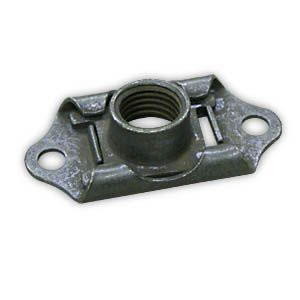
Anchor nuts are commonly used in airplanes. Also known as nutplates, they feature a threaded hole made of stamped metal. Anchor nuts are blind fasteners that you can install to the backside of a threaded rod. While some anchor nuts are fixed, however, others are floating.
What Are Floating Anchor Nuts
Floating anchor nuts are able to move slightly. They have a built-in nut, which is the threaded hole. You can connect a threaded rod, such as a bolt, to a floating anchor nut. They are known as “floating anchor nuts” because the built-in nut is able to move around.
Floating anchor nuts are typically riveted in place. After placing a floating anchor nut in the correct place, you can drive rivets through the holes on the side so that it stays in place. You can then insert a threaded rod into the floating anchor nut. The built-in nut will move around slightly, making it easier to connect the threaded rod.
Differences Between Fixed and Floating Anchor Nuts
Most anchor nuts fall under the category of fixed or floating. Fixed anchor nuts feature a static nut. In other words, the built-in nut isn’t able to move around. You’ll have to position the threaded rod perfectly over the hole.
Floating anchor nuts may look the same as fixed anchor nuts, but they are designed differently. Floating anchor nuts have a built-in nut that’s able to move around or “float” slightly. Even if the threaded rod is slightly off-center, you should be able to connect it to a floating anchor nut.
How Floating Anchor Nuts Work
Floating anchor nuts work by supporting a threaded rod from the backside. They feature a threaded hole, which is able to move around slightly. You can connect a bolt or similar threaded rod to a floating anchor nut.
Floating anchor nuts are easier to use than fixed anchor nuts. They don’t require perfect placement. You can connect threaded rods to floating anchor nuts even if they are off-center. All floating anchor nuts have a built-in nut that’s able to move slightly. Therefore, you can move the built-in nut to align it with the threaded rod. Fixed anchor nuts have a static, fixed nut that you can’t move.
In Conclusion
Floating anchor nuts offer a convenient connection point for threaded rods. You can connect a threaded rod to a floating anchor nut from the backside. Best of all, the nut within a floating anchor nut can move around slightly.



